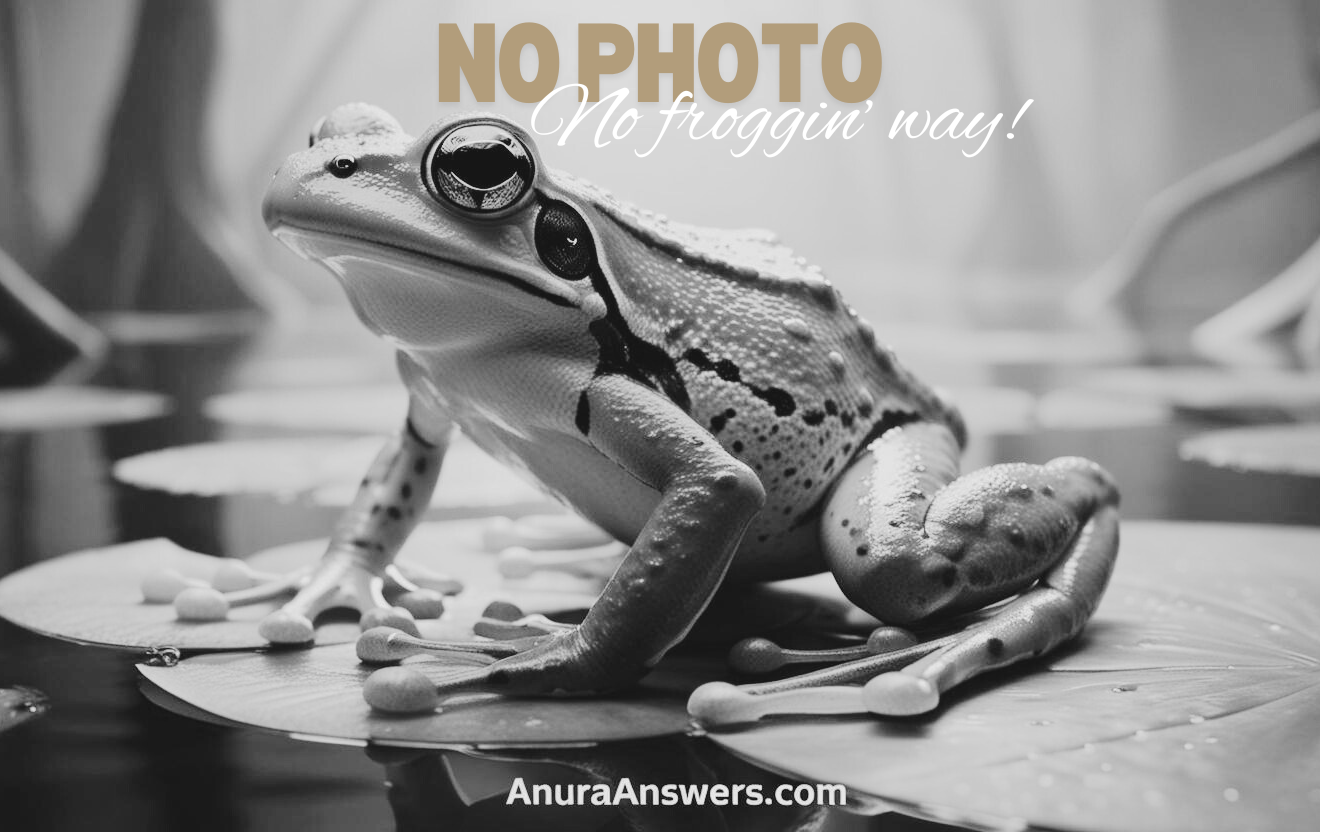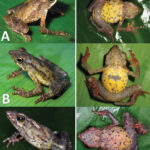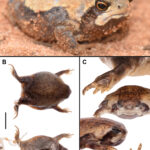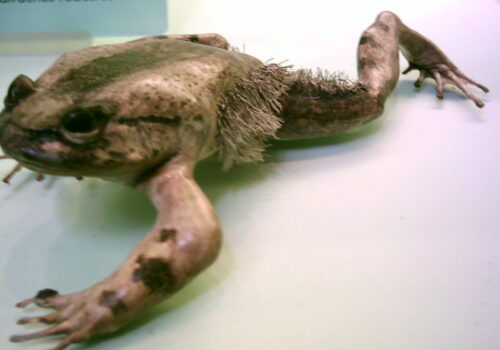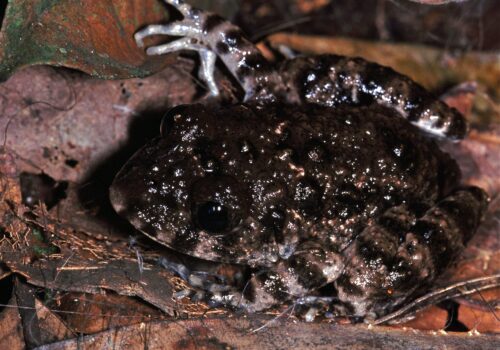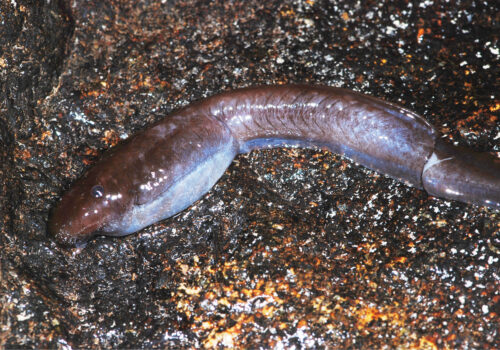- The Secretive Life of <em>Arthroleptis adolfifriederici</em>: Africa's Forest-Dwelling Jewel
The Secretive Life of Arthroleptis adolfifriederici: Africa’s Forest-Dwelling Jewel#
Hidden among leaf litter on the lush tropical rainforest floors of central Africa, a diminutive amphibian quietly lives out its life largely unnoticed by humans. Arthroleptis adolfifriederici, also known as Adolf Friedrich’s squeaker frog, may not immediately capture your attention with spectacular colors or flashy features, yet its secretive existence and remarkable adaptations make it a species worthy of admiration, respect, and conservation efforts. Classified scientifically within the Arthroleptidae family, this little brown frog often slips through unnoticed despite its significant ecological role in the forests of sub-Saharan Africa.
Unlike more charismatic and vibrant tropical frogs, Adolf Friedrich’s squeaker frog relies on subtler survival strategies, thriving in secrecy beneath layers of decomposing foliage. Fascinatingly, this species undergoes direct development, bypassing a free-swimming tadpole stage altogether—an adaptation that speaks volumes about its evolutionary journey. Intrigued yet? Let’s delve deeper into the mysterious world of Arthroleptis adolfifriederici and discover why this modest amphibian deserves our understanding and care.
Taxonomy and Classification#
Arthroleptis adolfifriederici belongs to the family Arthroleptidae, a diverse and intriguing group of frogs endemic primarily to sub-Saharan Africa. The genus Arthroleptis, typically referred to as “squeaker frogs,” contains numerous species distinguished by their distinct calls and reproductive strategies. First scientifically described by German zoologist Ernst Ahl in 1924, A. adolfifriederici garnered its memorable name in honor of Adolf Friedrich, Duke of Mecklenburg, a renowned German explorer who contributed significantly to African biological discoveries in the early twentieth century.
Within its genus, A. adolfifriederici is closely related to several similarly cryptic species, often requiring meticulous examination to distinguish clearly. Deriving concrete differentiations among Arthroleptis frogs largely depends on subtle anatomical features, acoustic calls, and precise geographic distribution, challenging researchers to continuously refine their methods for reliable species identification.
Natural Habitat#
Geographic Range and Distribution#
The rich biodiversity hotspots that host Adolf Friedrich’s squeaker frog span vast corridors of tropical rainforests through central and eastern Africa. Its known range encompasses regions within Rwanda, Burundi, eastern Democratic Republic of Congo, Uganda, Tanzania, and Kenya. These regions, renowned for their biological diversity, harbor some of the most intricate and valuable ecosystems on earth. It is within these forests’ dense cover, humidity-rich microclimates, and nutrient-rich soil that this diminutive amphibian has carved its ecological niche.
Habitat Preferences and Adaptations#
A. adolfifriederici prefers regions of primary moist tropical rainforest characterized by dense understory vegetation and deep, moist leaf-litter cover. This specific microhabitat, far from superficially appealing, belies a thriving microcosm brimming with life—rivaling in complexity the towering canopy above. The leaf-litter offers an ideal sanctuary, providing food, shelter, moisture retention, and crucial breeding grounds, all within centimeters of its tiny limbs.
The carefully balanced humidity and stable temperature of this forest floor environment are essential for this species as they rely on their semi-permeable skin for respiration and moisture absorption. Here, Adolf Friedrich’s squeaker frog exemplifies adaptation, expertly camouflaging itself amid layers of damp, decaying organic material.
Physical Characteristics#
Appearance and Size#
At a glance, Adolf Friedrich’s squeaker frog appears subtle, modest, even unremarkable to the untrained eye. Adults typically measure just 20-35 millimeters, hardly larger than a thumb-length. Yet upon close observation, their understated elegance emerges—each frog boasting a meticulously patterned coat of mottled browns, russet hues, and earthen greys. Such coloration offers near-perfect camouflage, rendering the species practically invisible among fallen leaves and branches.
Adaptive Features#
Beyond effective camouflage, their patches of darker brown and beige patterns break up the body outline, making distinguishing them by visual predators challenging. Their delicate body structure, featuring slender limbs and finely-structured digits, enhances their mobility along the forest floor. Large, prominent eyes situated high on their heads allow them an exceptional field of vision to quickly detect movement from potential threats and approaching prey.
Behavior and Life Cycle#
Feeding and Foraging Strategies#
As a predominantly insectivorous amphibian, Adolf Friedrich’s squeaker frog employs an effective ambush strategy to capture unsuspecting invertebrate prey. Its small size and stealthy tactics highlight its singular purpose in the leaf-litter microhabitat where it sits immobile and virtually unnoticed for hours—waiting patiently for prey like ants, beetles, termites, and other tiny invertebrates that unknowingly wander within its striking range. A flick of its sticky tongue is all it takes to secure nourishment.
Reproductive Behavior and Direct Development#
Perhaps most fascinatingly, A. adolfifriederici exhibits direct development: a remarkable reproductive adaptation. Females deposit small, gelatinous egg masses beneath leaf litter or within protected crevices and hidden locations. Unlike many amphibians, whose tadpoles hatch into aquatic environments to undergo metamorphosis, the juveniles of this squeaker frog hatch directly into miniature terrestrial frogs. This adaptive strategy eliminates dependence on standing bodies of water for reproduction, a significant advantage in rainforests where standing water may be scarce or seasonal.
Ecological Role#
A. adolfifriederici plays a substantial yet often understated role within its complex rainforest ecosystem. As both predator and prey, it maintains ecological equilibrium—controlling insect populations through predation, while providing sustenance to larger organisms such as birds, mammals, and reptiles. Their position within the food web helps stabilize countless intricate ecological processes within their habitat.
Moreover, as amphibians with highly permeable skin dependent on clean air and water, this species serves as a valuable ecological indicator. Shifts in their population dynamics and health status can alert biologists and conservationists early to potential environmental disturbances or ecological decline.
Threats and Conservation Status#
Main threats Facing the Species#
Like many amphibians worldwide, A. adolfifriederici faces notable threats, primarily from habitat loss and environmental disruption. Rapid deforestation driven by logging, agricultural expansion, and expanding human settlements threatens these vital forest ecosystems. Loss of humid, leaf-littered floors can lead directly to significant population declines, as suitable breeding sites and prey availability diminish correspondingly.
Additionally, global climate change impacts rainfall patterns and humidity levels, posing particular risks to amphibians adapted to stable forest floor microclimates. Increases in forest fires, drought periods, as well as pesticide pollution, fungal diseases, and habitat fragmentation further heighten challenges for this sensitive species.
Conservation Status and Efforts#
The current International Union for Conservation of Nature (IUCN) Red List categorizes A. adolfifriederici as Least Concern, citing a relatively wide distribution and presumed stable population. However, isolated populations remain vulnerable to habitat loss and other anthropogenic threats. Consequently, continuous monitoring and research initiatives, alongside active conservation partnerships, are essential to safeguard future populations and preserve rainforest integrity and biodiversity.
Cultural and Scientific Significance#
Though not a species widely celebrated in human culture or folklore, Adolf Friedrich’s squeaker frog occupies a critical niche in scientific research, particularly in amphibian reproductive biology and rainforest ecosystem studies. Its direct developmental process offers invaluable insights into vertebrate evolution, adaptations, and the nuanced interactions within tropical rainforest ecosystems. Research efforts into less conspicuous amphibians like this species are pivotal, enlightening the complex web of life and informing robust conservation policies.
Conclusion: Appreciating and Protecting the Subtle Wonders#
Arthroleptis adolfifriederici may not dominate global conservation campaigns or captivate millions through bright displays and dramatic appearance. Yet this subtle, secretive species reminds us that beauty and importance in the natural world often lie hidden beneath the surface, quietly sustaining ecosystems from below. Understanding and appreciating such quiet marvels elevate our appreciation of biodiversity in all forms. As conservationists, nature enthusiasts, and stewards of Earth’s wildlife, let us not overlook these hidden treasures, and instead work cohesively to ensure they have a forest home for generations to come.
